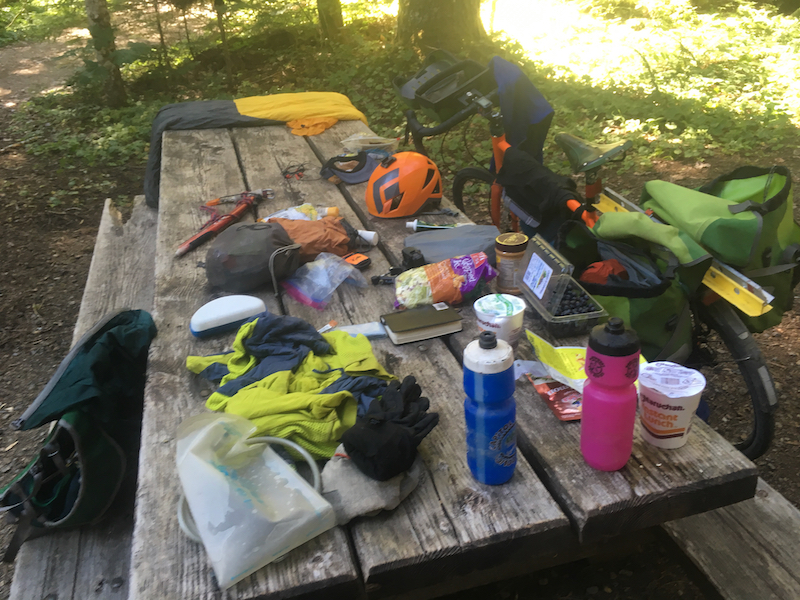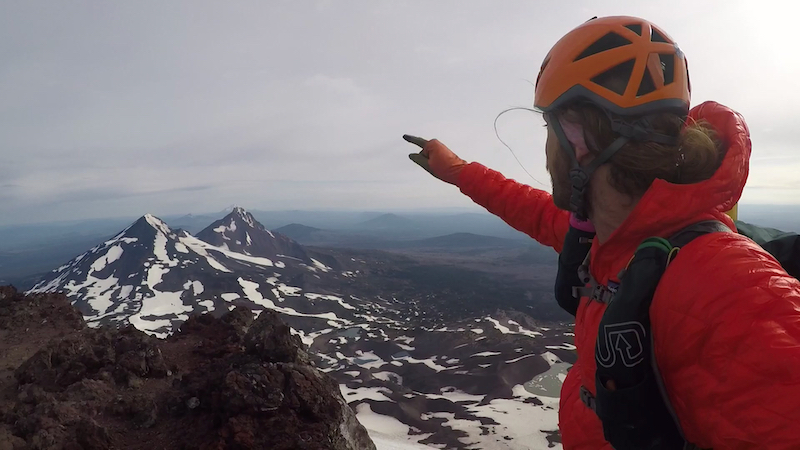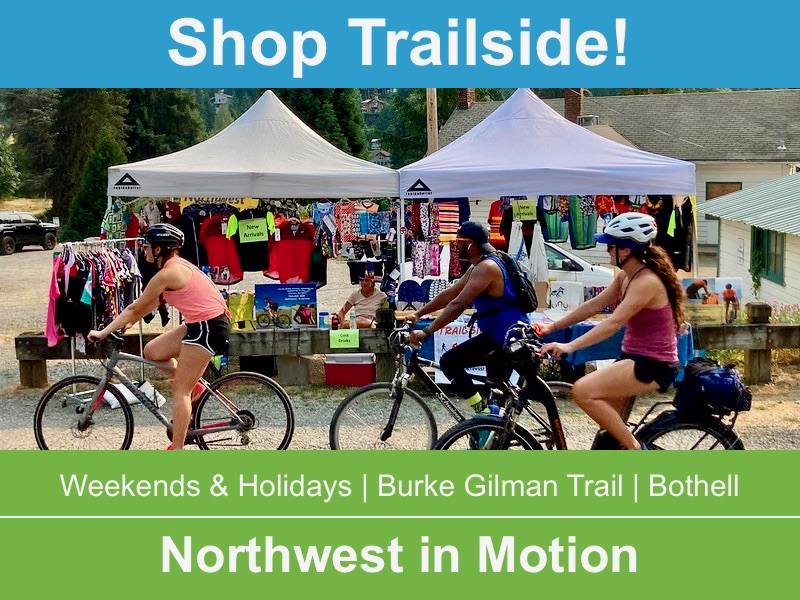First off, apologies to Richard Kresser. We started working on this story back in 2018, but it fell through the cracks.
During June and July 2018, Richard Kresser completed what we think is (still) a one-of-a-kind, human-powered, (attempted self-supported), south to north enchainment of all 16 of the “active” Cascade Range volcanoes.

Enchainment is a style of climbing that involves linking multiple mountains, peaks, or routes in one continuous effort. While folks have used automobiles to enchain some Cascade volcanoes, Richard is the only person we know of linking them all by bicycle.
This project probably also qualifies as an “ecopoint,” a term popularized in Europe in ~2020 “to extend the notion of redpoint by including the approach by fair means (public transport, bike, boat, foot).”
“To my knowledge, no one has attempted to climb all the active volcanoes in one season before, much less by human power. The closest was in 2012 when Chris Davenport and Jess McMillan skied 15 of the volcanoes in two weeks, traveling by RV in between. As this will be a combination of bicycling touring and climbing, I’m calling it the Tour de Volcanoes!”
Richard left Tacoma on June 12, 2018, cycled to California via Hwy 101, east to Mt. Lassen, progressed up the Cascade Range to Mt Baker, then cycled back home to Tacoma. Door to door, he completed the loop in 39 days. He finished on July 20.

For context, in July 2014 I reported on a group that did a verifiable supported Seattle-Mt Rainier Summit-Seattle bicycle round trip. One reader complained that there had been a previous Rainier summit via bike round trip, but I was never able to confirm it, and that reader couldn’t provide a gps track.
For more about Richard’s background, read our 2018 summary of Richard’s adventure resume: Running Towards Joy.

In endurance adventures like this, the level of support the adventurer gets is important:
“While ‘unsupported’ and ‘supported’ have very clear definitive boundaries, self-supported does not. Taken from the Fastest Known Time website, ‘Self-supported means that you don’t carry everything you need from the start, but you don’t have dedicated, pre-arranged people helping you.’ Specifically, I will resupply with food and water along the route from grocery stores, gas stations, roadside cafes, or anywhere I can get some food. While mailing boxes to myself is allowed, I do not believe this is in the spirit of the challenge and will not be doing it myself. For example, I don’t need any of my climbing gear for the 800 miles of biking down to Lassen. Nor do I need my technical gear (rope, harness, pickets) for many of the mountains. I could potentially mail these unneeded items forward to particular spots, but I feel better about starting and ending the tour with all my gear, and only resupplying with food and water. I potentially will have gear shipped to me or bought in a store if gear breaks or I lose it. Also, I plan to meet up with my girlfriend at some point on the tour, but no assistance from her will be provided.”

Richard’s cycling shoes were stolen in Bend. He ordered replacements that were supposed to be delivered to a business along the route, but the delivery was declined, and he cycled the last 1,000 miles in insulated high top trail runners.

The climbing part of the adventure started at the Mt Lassen parking lot at midnight on June 23rd. “From here on out, I was in ‘go mode.’ I biked, climbed, biked, climbed, ate a lot of food, and repeated over and over. Some of these volcanoes I had climbed before, some I had never been to. It was very special to reach the summit of a volcano, look north, and actually see the valleys and ridges I’d bike to reach the next Volcano. I was naturally more concerned with safety on the climbs than I was with the biking portion. However, every climb went far smoother than I would have expected. Being solo, I never wanted to push my body to the point I felt I was not in control. My goal was to push hard, but never reach the point where I couldn’t rely on my fitness and mental control to escape a potential scenario. Still, I was able to put up times on the Volcanoes I would have been happy with on a regular outing, not even taking the thousands of feet I had just climbed on two bike wheels to get myself TO the mountain. There were a few big days in there I had planned that would combine a lot of biking and climbing, and deep down I really expected it wasn’t a realistic time schedule. But, things flowed well and with a fair bit of luck, I was able to keep schedule and even at one point, cut a day out of my schedule.”

On Mt Jefferson he converged with a large Mountaineers‘ group at a technical crux. In order to keep things safe for everyone he merged with their group for part of the climb, which nullified his ambition to do the adventure self-supported.
Most of the logistical problems occurred between the climbs. “My rear tire wore through quicker than I could have expected, and it popped before I could get to Bend, Oregon for a replacement. I was stuck in the middle of an Old Testament style plague of mosquitoes trying to switch my front/rear tires. It was that moment I regretted bringing a tarp for rain protection to save weight, instead of a tent that would keep the bugs out. The stress from that night took years off my life, and the next morning I had to retreat 35 miles backwards to limp my bike to a shop in Klamath Falls. Then, in Bend, while getting breakfast at a cafe, someone ran off with my bike and panniers. He dropped it in an alleyway, and made off with about one third of all my gear, maybe $1,500 worth. The next 36 hours covered every range of negative emotion as I dealt with the psychological, financial, and logistical blow of replacing each critical piece of gear. Thanks to friends, REI, and one day shipping from Backcountry.com, I was able to get back on the road after just a day’s delay. Up to this point, I had adhered to self supported styles with accepting no non public assistance, but with the thievery, I was forced into accepting aid in the form of a place to stay (camping system was stolen) and borrowing gear.”

Once he was off the technical portions of Mt Baker, he breathed a sigh of relief and felt confident the project was in the bag. “After 25 days, 9 hours, and 58 minutes, I arrived back at the Schreibers Meadows parking lot. The heat, the bugs, the theft, stealth camping, watching out for cops, ice cold river baths and laundry times, all gave way to the memories of eating pints of ice cream in the shade, with my feet in a stream, giant plates of all the breakfast things, the gorgeous summits, exhilaration of snow running descents, wind whipping through my hair going 40 mph down a mountain road. A day and a half of pushing it back home to Tacoma to my girlfriend, family, and friends awaiting me completed the loop.”

The Volcanoes
1. Mount Lassen
2. Mount Shasta
3. Medicine Lake (Mount Hoffman)
4. Mount McLoughlin
5. Mount Mazama (Hillman Peak)
6. Newberry (Paulina Peak)
7. South Sister
8. Middle Sister
9. North Sister
10. Mount Jefferson
11. Mount Hood
12. Mount Adams
13. Mount Saint Helens
14. Mount Rainier
15. Glacier Peak
16. Mount Baker
Stats
–2,400 miles of biking with 127,000 feet of elevation gain
–On foot, 180 miles of climbing with 79,700 feet of gain
–From the Mount Lassen trailhead, to the finish at Mount Baker’s Schriebers Meadow trailhead: 25 days, 9 hours, 58 minutes.
Tour de Volcanoes on Fastest Known Time
For a detailed day-by-day recap, visit Richard’s Running Farther website.
For logistical details, check out his planning spreadsheet.
